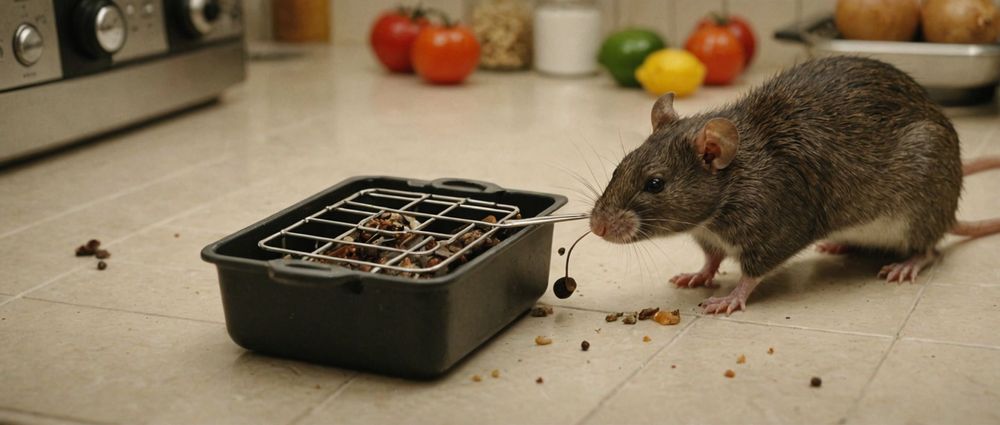Dealing with a rat infestation can be a daunting task. Whether you are facing small or big rats, effectively eliminating them from your home requires a strategic approach that combines prevention, identification, and removal techniques. In this article, we will explore proven methods to get rid of rats once and for all, ensuring your living space is free from these unwanted pests.
Understanding the Signs of a Rat Infestation

Before you can tackle the problem, it’s essential to recognize the signs of a rat infestation. Rats are clever creatures that often seek shelter in homes to find food, warmth, and safety. Understanding these signs can help you identify an infestation early and take appropriate action. Here are the common indicators:
- Droppings: Small, dark droppings resembling grains of rice are often found near food sources.
- Noises: Scratching or scurrying sounds in walls or ceilings, especially at night, can indicate active rats.
- Gnaw marks: Bite marks on wood, electrical wiring, or food packaging may signal their presence.
- Nesting materials: Shredded paper or fabric found in hidden areas can be a sign of nesting behavior.
- Footprints: In dusty areas, you may notice tracks left by rats, identifiable by their distinctive shape.
Effective Prevention Strategies

Preventing a rat infestation is more effective than trying to eradicate one. This involves several proactive strategies that can keep your home rat-free. Here are essential tips you can implement:
- Seal Entry Points: Inspect your home for holes or cracks, especially in the foundation, walls, and around doors and windows. Use steel wool or caulking to seal these gaps.
- Maintain Cleanliness: Store food in airtight containers and clean up crumbs or spills immediately. Regularly dispose of garbage in sealed bins.
- Declutter: Remove clutter both inside and outside your home that may provide nests for rats, such as piles of debris, old furniture, or overgrown vegetation.
- Remove Outdoor Attractants: Keep pet food and bird seeds stored securely and ensure compost piles are managed properly to avoid attracting rats.
- Consider Natural Deterrents: Use natural repellents such as peppermint oil or cayenne pepper around entry points, as rats dislike strong odors.
Choosing the Right Trap or Poison
If preventive measures fail and you find yourself with a rat problem, you may need to employ traps or poison as part of your strategy. Not all traps work the same, and it’s crucial to choose the right one based on the severity and type of infestation. Here are a few options:
- Snap Traps: These are mechanical traps that kill rats instantly. Place them along walls where you suspect activity.
- Electronic Traps: These traps use batteries to deliver a lethal shock to the rat, offering a quick and humane option.
- Live Catch Traps: These allow you to capture rats without harming them, giving you the chance to release them far from your home.
- Rodenticides: Poison baits should be used with caution, particularly in homes with pets or children. Always follow label instructions.
- Professional Exterminators: If the infestation is severe, seeking professional help can provide tailored solutions to remove rats safely and effectively.
Maintaining an Ongoing Rat Control Plan
Once you are rid of rats, it’s crucial to implement an ongoing maintenance plan to prevent future infestations. Consistency is key in this battle against these pests. Follow these steps:
- Regular Inspections: Routinely check your home and garden for new entry points or signs of rats.
- Continued Sanitation: Keep food areas clean, and ensure outdoor garbage is securely stored.
- Testing Repellents: Reapply natural deterrents periodically to maintain their effectiveness.
- Monitoring Traps: Regularly check traps even when no recent signs of rats have been observed.
- Stay Educated: Keeping informed about new pest control methods and rat behaviors can help you stay one step ahead.
Conclusion
Rats can pose a significant nuisance and potential health risks if allowed to invade your home. By understanding the signs of an infestation, implementing effective prevention strategies, utilizing the right traps or poisons, and maintaining an ongoing control plan, you can eliminate rats and keep your home safe. Remember, the key is vigilance and taking early action to protect your living space from these pesky intruders.
FAQ
1. What attracts rats to my home?
Rats are typically attracted to food, warmth, and shelter. Leaving food out, having clutter, and unsealed garbage can all invite them into your home.
2. How do I know if I have a rat problem?
Look for common signs such as droppings, gnaw marks, unusual noises at night, and signs of nesting material in hidden areas.
3. Can I use homemade traps for rats?
Yes, there are numerous DIY rat trap tutorials available online. However, be cautious with the materials and effectiveness compared to commercial traps.
4. Is it safe to use poison for rats?
Using poison carries risks, especially in homes with pets or children. Always read the labels and consider professional help if unsure.
5. How can I prevent future rat infestations?
Preventing future infestations includes regular cleanliness, sealing entry points, maintaining yard maintenance, and continuing to monitor for signs of rats.
